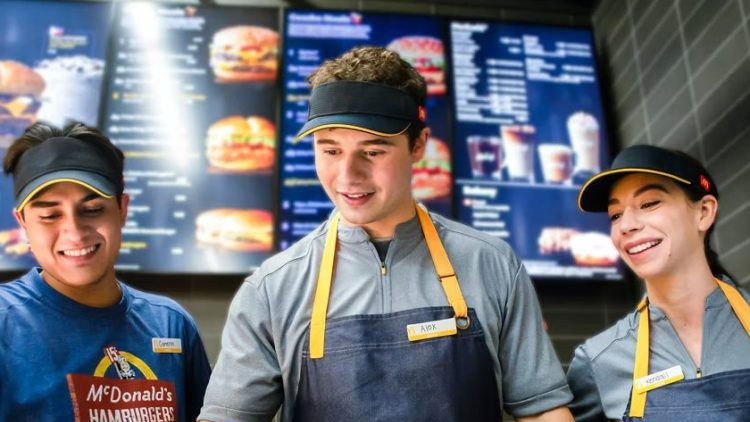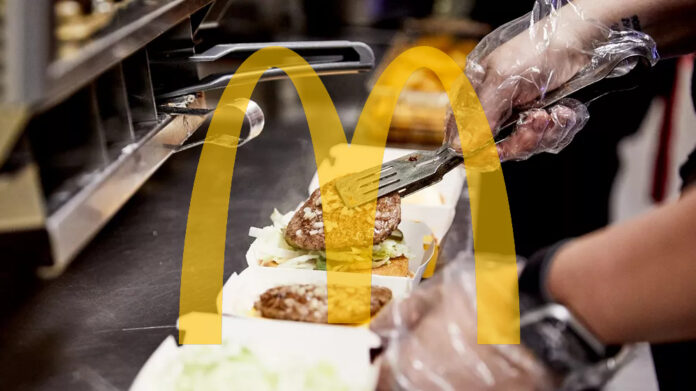McDonald’s is digitizing operations with Google Cloud through AI, IoT, and cloud platforms, enhancing restaurant efficiency, streamlining corporate systems, and boosting customer engagement with loyalty rewards and reduced wait times.
In sum – what to know:
Restaurant platform – new AI and IoT kitchens are going live, globally; supported by Google Cloud.
Corporate platform – legacy corporate IT systems are being consolidated into cloud-based tools.
Customer platform – loyalty programs, web ordering, geofence alerts to cut wait times, strengthen brand.
Here’s a quick take-away bite about digital change at fast-food burger chain McDonald’s; the US-based firm says it is deploying IoT sensing and AI sense-making solutions at the edge to improve restaurant performance and in the cloud to help streamline its corporate affairs. It is also increasing its digital engagement with customers – in terms of marketing rewards, but also to open new web retail channels and, more interestingly, to reduce wait times. It has served this up as a three-’platform’ change strategy, internally branded as ‘Digitizing the Arches’, across its physical outlets (‘restaurant platform’), online channels (‘customer platform’), and business operations (‘company platform’).
Let’s consider the first and last of these, which are perhaps most interesting, and then quickly cover the third. McDonald’s said it is working with Google Cloud to deploy a new restaurant platform, called simply Edge, to “extend cloud capabilities directly into [its restaurants]”. It’s the digital foundation for the next generation of restaurant innovation – powering AI and IoT-enabled kitchens that are smarter, faster, and more reliable,” said Brian Rice, executive vice president and global chief information officer at the firm. “The result will be increased uptime, better food quality, and a smoother experience for both customers and crew.”
The ‘edge’ setup, presumably deployed in local / regional data centres (rather than on site; but TBC), is live in “hundreds” of US outlets, and “expanding globally”, according to Brian Rice, writing in a new blog post. The precise functionality of these “AI and IoT-enabled kitchens” is unclear, but McDonald’s is (“in addition”) deploying connected “AI-powered ‘accuracy scales’” to compare the target weights and actual weights of outgoing orders – to flag any anomalies to the crew (“if anything is missing”) before they go out. It has deployed the solution in “thousands” of drive-thru / delivery outlets in a dozen markets so far, said Rice.
The new ‘company platform’ sounds like an IT streamlining exercise, which also cascades down to restaurant efficiencies. Rice said McDonald’s is working with Google Cloud to replace “hundreds of legacy tools with modern, scalable platforms” to help staff “move faster, make smarter decisions, and focus more time on business insights and running great restaurants”. The company has rolled out “new systems across multiple markets” this year, it said. As an example, it is retiring “hundreds” of legacy finance and human resources (HR) systems, and “consolidating into one cloud-based enterprise solution”. The point is to deliver better integration, better efficiency, better results.
“This is what transformation looks like at a company the size and scale of McDonald’s,” said Rice.

The new ‘customer platform’ is mostly about marketing and engagement. US customers have been able to redeem reward points for non-food “digital experiences” for the first time – access to Snapchat+, for example. Rice talked about how the company’s loyalty scheme is successful – to the point that customers partaking in it have doubled their visits in 12 months since joining. It has 185 million 90-day active loyalty users in 60 countries, versus a target of 250 million by 2027, apparently. Besides, it has now launched ‘web ordering’ (with an app) in Sweden, and it has also introduced new geofencing tech to alert staff when customers with pre-orders approach the restaurant.
It said its ‘ready-on-arrival’ offer can reduce customer wait times by more than 50 percent. “For a brand that measures progress in tenths of seconds, this is proving to be transformative,” said Rice. There’s more to come, he added. “While we’re proud of the progress we’ve made, we’re even more excited about what’s ahead.”
Rice said: “We’ve always believed in the power of scale. But in today’s world, scale alone isn’t enough to make an impact. What matters is how you use that scale. That’s where digital… comes in… [This] is a once-in-a-generation transformation that’s redefining what it means to be a modern, connected brand. This isn’t just about upgrading our systems; we’re unleashing the full potential of McDonald’s brand and global footprint…. The investments we are making will help accelerate growth, using the power of data to reshape how our company operates at every level of the business.”

